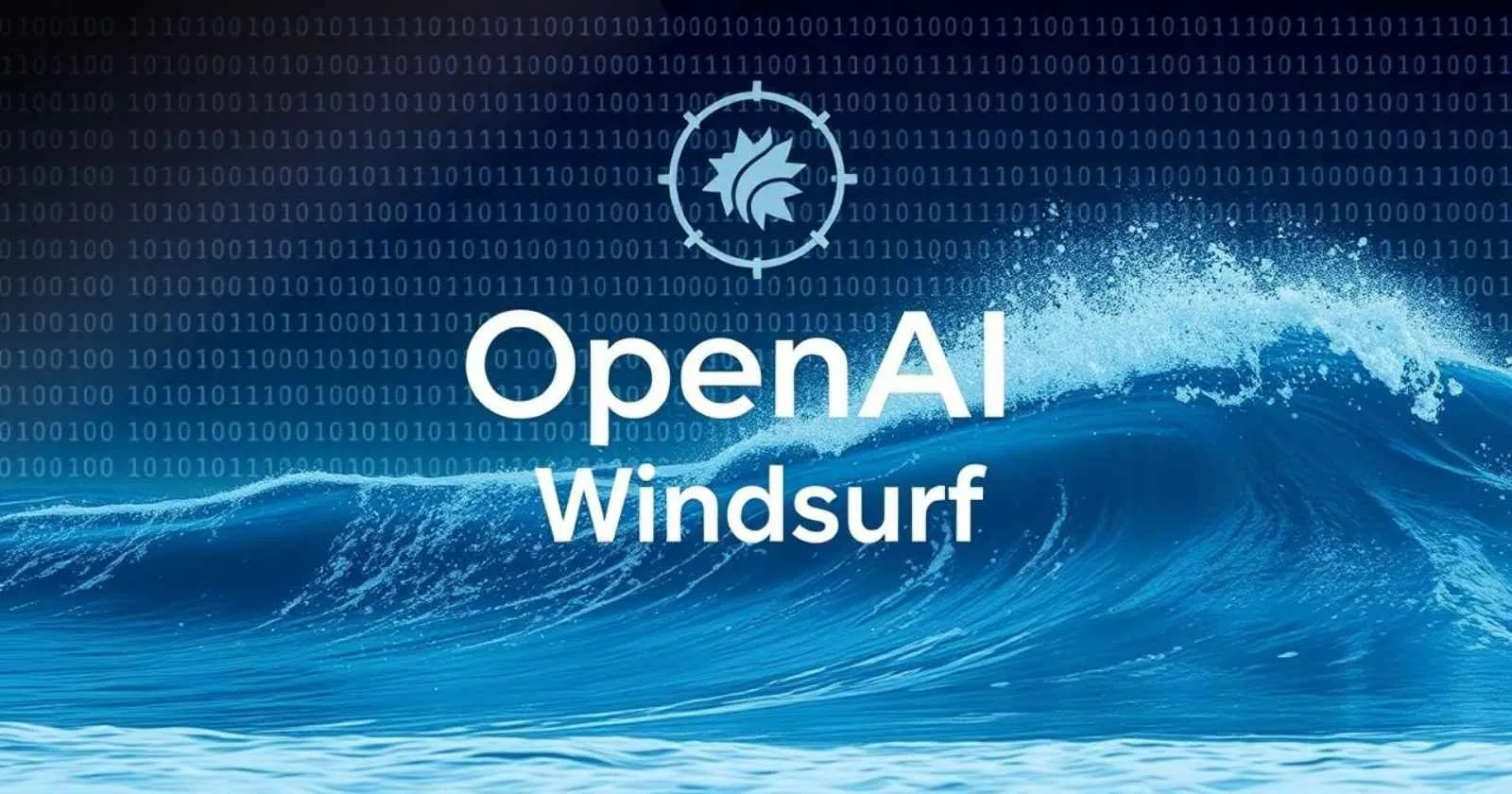How to Download and Install Windsurf AI in Minutes
Looking to enhance your coding experience with AI-powered assistance? Windsurf AI stands at the forefront of intelligent development environments, offering powerful features that can dramatically improve your productivity and code quality. This comprehensive guide will walk you through the process of downloading, installing, and setting up Windsurf AI on your system in just minutes.
Whether you’re a professional developer or a coding enthusiast, follow these simple steps to get started with one of the most advanced AI coding tools available in 2025.
Table of Contents
- What is Windsurf AI?
- System Requirements for Windsurf AI
- Windows Requirements
- macOS Requirements
- Linux Requirements
- Step-by-Step Download and Installation Guide
- Step 1: Download the Installer
- Step 2: Run the Installer
- Step 3: Launch Windsurf AI
- Initial Setup and Configuration
- Step 1: Select Setup Flow
- Step 2: Choose Editor Theme
- Step 3: Create or Sign In to Your Account
- Start Coding Smarter Today
- Optimizing Windsurf AI After Installation
- Configure Project Indexing
- Adjust AI Assistance Level
- Set Up Keyboard Shortcuts
- Explore the Cascade Panel
- Troubleshooting Common Installation Issues
- Windows Installation Issues
- macOS Installation Issues
- Linux Installation Issues
- Authentication Issues
- Upgrading to Pro for Enhanced Features
- Pro Plan Benefits
- How to Upgrade
- Conclusion: Your Journey with Windsurf AI Begins
- Frequently Asked Questions
- Is Windsurf AI available for all operating systems?
- How much disk space does Windsurf AI require?
- Can I use Windsurf AI offline?
What is Windsurf AI?
Before diving into the installation process, let’s quickly review what makes Windsurf AI special:
- The world’s first agentic IDE with advanced AI capabilities
- Integration with powerful models like GPT-4o and Claude 3.5 Sonnet
- Unique “Flows” approach that combines copilot and agent functionalities
- Deep contextual understanding of your entire codebase
- Multi-file editing capabilities with AI assistance
- Integrated terminal with intelligent command suggestions
Recently acquired by OpenAI for $3 billion, Windsurf (formerly Codeium) has established itself as a premier development tool that combines traditional IDE capabilities with cutting-edge AI.
Read also : Vision of Windsurf CEO on Coding’s Future
System Requirements for Windsurf AI
Before downloading Windsurf, ensure your system meets these minimum requirements:
Windows Requirements
- Operating System: Windows 10 or newer
- Processor: Multi-core CPU (8+ cores recommended)
- Memory: 16GB RAM minimum (32GB recommended)
- Storage: 10GB available space (SSD recommended)
- Internet: Stable broadband connection
macOS Requirements
- Operating System: macOS Yosemite or newer
- Processor: Multi-core CPU (Apple Silicon or Intel)
- Memory: 16GB RAM minimum (32GB recommended)
- Storage: 10GB available space (SSD recommended)
- Internet: Stable broadband connection
Linux Requirements
- Operating System: Ubuntu 20.04+ or other distributions with glibc >= 2.31, glibcxx >= 3.4.26
- Processor: Multi-core CPU
- Memory: 16GB RAM minimum (32GB recommended)
- Storage: 10GB available space (SSD recommended)
- Internet: Stable broadband connection
Step-by-Step Download and Installation Guide
Follow these detailed instructions to download and install Windsurf AI on your system:
Step 1: Download the Installer
Visit the official Windsurf website through our exclusive referral link to receive bonus features and credits:
Select the appropriate version for your operating system:
- For Windows, choose between x64 (standard) or ARM64 (for devices with ARM processors)
- For macOS, select the appropriate version for your Mac (Universal, Apple Silicon, or Intel)
- For Linux, choose between the Ubuntu/Debian (.deb), Fedora/RHEL (.rpm), or generic (.AppImage) packages
Step 2: Run the Installer
Once the download completes, run the installer by following these operating system-specific instructions:
Windows Installation
- Locate the downloaded
.exefile in your Downloads folder - Double-click the installer to launch it
- If prompted by User Account Control (UAC), click “Yes” to allow the installation
- Follow the on-screen instructions in the installation wizard
- Choose your installation location or use the default directory
- Select any additional options, such as adding a desktop shortcut
- Click “Install” to begin the installation process
- Wait for the installation to complete
- Click “Finish” to exit the installer
You can switch between the installation instructions by selecting your operating system above.
Read also : Complete Guide to the Windsurf AI Editor for Beginners
Step 3: Launch Windsurf AI
After successful installation, launch Windsurf AI:
- On Windows, you can find Windsurf in the Start menu or by clicking the desktop shortcut (if created)
- On macOS, open Windsurf from your Applications folder
- On Linux, launch Windsurf from your applications menu or by running the command
windsurfif you added it to your PATH
Initial Setup and Configuration
When you first launch Windsurf AI, you’ll be guided through an onboarding process to configure your environment:
Step 1: Select Setup Flow
Windsurf offers several setup options:
- Start Fresh – Begin with a new configuration
- Choose your preferred keybindings (VS Code default or Vim)
- Import from VS Code – Transfer your existing VS Code settings
- Select which components to import (settings, extensions, or both)
- Import from Cursor – Migrate your Cursor configuration
- Choose which components to import (settings, extensions, or both)
You can also opt to install the windsurf command in your PATH, which allows you to launch Windsurf from the terminal.
Step 2: Choose Editor Theme
Select your preferred color theme from the available options. Don’t worry about making a permanent choice—you can always change this later in settings.
Step 3: Create or Sign In to Your Account
Windsurf requires an account to use its features:
- If you don’t have an account, click “Sign Up” to create one
- If you already have an account, click “Sign In”
- You can sign up/in using:
- Email and password
- Google account
- GitHub account
Using our referral link (https://windsurf.com/refer?referral_code=b449260826) during registration provides you with additional benefits and features.
Start Coding Smarter Today
Get Windsurf AI installed and start experiencing the future of development. Sign up using our exclusive referral link to receive bonus credits and features!
Our team at WebDest can provide additional assistance with setup and optimization.
Optimizing Windsurf AI After Installation
After completing the basic setup, consider these optimizations to enhance your Windsurf experience:
Configure Project Indexing
Windsurf AI’s power comes from its understanding of your codebase through indexing:
- Open your project folder (File → Open Folder)
- Wait for the initial indexing to complete (this may take a few minutes for larger projects)
- For better performance with large repositories, you can customize indexing:
- Create a
.windsurfignorefile in your project root - Add patterns for directories or files you want to exclude from indexing (similar to
.gitignore)
- Create a
Adjust AI Assistance Level
Customize how proactive the AI assistance should be:
- Open Settings (File → Settings or Ctrl+,)
- Navigate to AI → Assistance Level
- Choose from levels ranging from minimal to comprehensive assistance
Set Up Keyboard Shortcuts
Customize keyboard shortcuts for commonly used features:
- Open Settings (File → Settings or Ctrl+,)
- Navigate to Keyboard Shortcuts
- Search for Windsurf or Cascade to find AI-related commands
- Assign your preferred shortcuts to features you use frequently
Explore the Cascade Panel
The Cascade panel is your gateway to Windsurf’s most powerful AI features:
- Open the Cascade panel (View → Cascade or Alt+C)
- Try asking questions about your code
- Request explanations or optimizations for selected code segments
- Experiment with complex refactoring operations
Read also : Using Windsurf AI Inside Cursor for Hybrid Productivity

Troubleshooting Common Installation Issues
If you encounter problems during installation or initial setup, here are solutions to common issues:
Windows Installation Issues
- “Windows protected your PC” message
- Click “More info” and then “Run anyway” to proceed with installation
- Installation fails or crashes
- Ensure your system meets the minimum requirements
- Try running the installer as administrator
- Temporarily disable antivirus software during installation
- Update errors on Windows
- Ensure you have write permissions to the installation directory
- Try closing Windsurf completely and restarting the update
macOS Installation Issues
- “App is damaged and cannot be opened” message
- This is often a security feature. Open System Preferences → Security & Privacy and click “Open Anyway”
- Alternatively, right-click the app and select “Open” from the context menu
- Installation fails
- Ensure you have sufficient permissions to install applications
- Try redownloading the installer if the file might be corrupted
Linux Installation Issues
- Dependency errors
- Ensure your system has the required dependencies installed:
- For Ubuntu/Debian:
sudo apt-get update && sudo apt-get install libgtk-3-0 libnotify4 libnss3 libxss1 libxtst6 xdg-utils libatspi2.0-0 libuuid1 libsecret-1-0
- Application doesn’t launch
- Check if your distribution meets the minimum glibc version requirements
- Try launching from terminal to see error messages
Authentication Issues
If you’re having trouble with the authentication flow:
- Click “Having Trouble?” on the authentication screen
- Copy the authentication link to your clipboard
- Open the link in your browser
- Copy the authentication code displayed in the browser
- Paste it back into Windsurf
Read also : Hosting Bot Explained: Keeping Your Discord Bot Online
Upgrading to Pro for Enhanced Features
While Windsurf’s free tier offers impressive capabilities, upgrading to Pro unlocks the full potential:
Pro Plan Benefits
- Access to premium AI models – Use advanced models like GPT-4o and Claude 3.5 Sonnet
- Increased credit allocation – 500 User Prompt credits and 1,500 Flow Action credits per month
- Enhanced performance – Faster response times and reduced latency
- Advanced context awareness – Better understanding of complex codebases
- Priority support – Faster access to technical assistance
How to Upgrade
- Click on your profile icon in the bottom left corner of Windsurf
- Select “Upgrade to Pro”
- Follow the prompts to complete your subscription
- Pro features will be available immediately after successful payment
Conclusion: Your Journey with Windsurf AI Begins
Congratulations! You’ve successfully downloaded, installed, and configured Windsurf AI on your system. This powerful development environment combines traditional IDE capabilities with cutting-edge AI assistance to transform your coding experience.
As you begin exploring Windsurf, take time to experiment with its various features and capabilities. The more you use it, the better it will understand your coding style and preferences, offering increasingly relevant and helpful suggestions.
Remember that learning to work effectively with AI-powered tools involves some adjustment to your workflow. Be patient as you discover the optimal ways to leverage Windsurf’s capabilities for your specific development needs.
Ready to elevate your coding experience? Download Windsurf AI now using our referral link to receive bonus features and start your journey with the future of development tools!
Frequently Asked Questions
Is Windsurf AI available for all operating systems?
Yes, Windsurf AI is available for Windows (10 and newer), macOS (Yosemite and newer), and Linux (Ubuntu 20.04+ and other major distributions). There are specific builds for different architectures, including ARM support for both Windows and macOS. This cross-platform availability ensures that virtually all developers can use Windsurf regardless of their preferred operating system.
How much disk space does Windsurf AI require?
Windsurf AI typically requires around 500MB-1GB for the initial installation, but you should have at least 10GB of free space available for optimal performance. This extra space is needed for project indexing, cache files, and temporary storage during operations. The exact space requirements may vary depending on the size of the projects you’re working with and how many extensions you install.
Can I use Windsurf AI offline?
Windsurf AI requires an internet connection for its core AI features, as these rely on cloud-based language models and services. While you can perform basic editing tasks offline, the AI-powered capabilities like code completion, generation, and Cascade interactions will not function without an internet connection. For developers who need to work in environments with limited connectivity, it’s best to plan your work accordingly or consider alternative offline IDEs for those situations.
Read also :Windsurf Pro Features: Advanced Tools for Power Users





